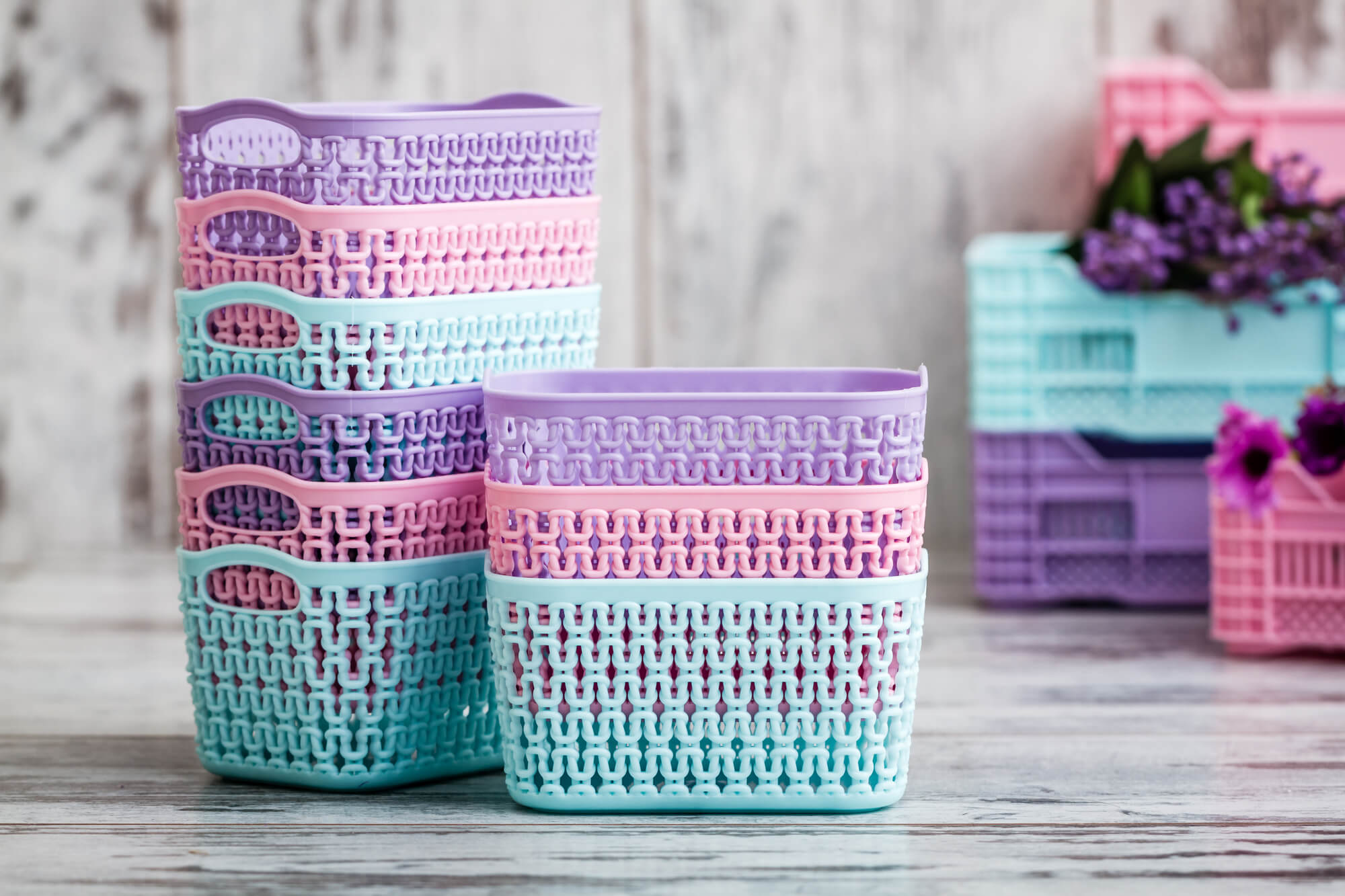Read time: Approximately 3 minutes
When you think about controlling the clutter in your home, what comes to mind?
Although most of us default to lots of baskets, bins and cute little containers, those items don’t completely solve the problem.
Controlling clutter by creating boundaries is one of the most effective methods of controlling the clutter in your home .
My mom and I got into a discussion over, of all things, an empty butter container.
(My mom is 87 and lives with us.)
After taking the last swipe of butter from the container, she handed it to me and said, “Why don’t you keep this so I can put my leftovers in it?”
To which I responded, “No, I keep one bin of plastic containers and when it is full, everything else gets tossed or donated.”
Her reply? “If it were me, I would start another bin.” (She speaks the truth. I was there when we cleaned out the house!)
Fast forward to the day I was cleaning out the laundry room where I store the plastic containers. The containers had morphed from one nice sized bin into two nice sized bins. The bins were taking up a lot of coveted shelf space.
As I sorted them, I realized I had accumulated a lot of really nice plastic containers. For just a brief moment, I considered designating a second bin or even a bigger bin that would enable me to keep all those very nice plastic containers.
Before I could act on that thought, my boundary mentality kicked in.
Way back, I had rationally decided that possessing an overabundance of plastic containers was not necessary. I had intentionally chosen a bin that was large enough to store an adequate number of containers. The intent of designating one bin was that when the bin was full, any excess needed to be either disposed of or donated.
Creating a physical boundary for plastic containers keeps my impulse to keep all the good plastic containers in check.
If you really want to control clutter in your home, one of the best places to begin is by learning to implement clutter boundaries.
What are clutter boundaries?
Clutter boundaries can certainly be all the cute bins, totes and boxes into which we lovingly separate our stuff.
(Brian once commented that if he could build me a house of bins, it would make me so happy. He was right!)
However, clutter boundaries can also be any drawer, shelf, or even a place under the bed that is designated to hold a particular grouping of like items.
Boundaries can be created by splitting an area in half, either physically or mentally.
My bread drawer has a divider down the middle enabling me to put cookies on one side and bread on the other.
Physical boundaries aren’t always realistic. In those instances, numbers can create the boundary.
If my coffee cup boundary is seventeen, and there are twenty-seven coffee cups on the shelf, it is time to purge ten coffee cups.
The number that I am willing to keep has created a boundary.
Number boundaries are a great clutter control concept that can be kid friendly. Kids understand you can keep seventeen stuffed animals. After that, you need to choose some to go to a new home.
With what kind of items can you set boundaries?
Any item of which you purchase or accumulate multiples or groups of related items can be controlled by setting boundaries.
Here are just some examples of things that are typically collected in multiples and groups:
- Plastic containers
- Socks (both the matched and unmatched variety)
- Board games
- Matchbox cars
- Crafting Supplies
- Office Supplies
Those are just a few. The list is virtually endless.
When you set a boundary and then exceed the boundary, that is a signal that it is time to declutter that one boundary area.
Using boundaries simplifies the entire process of decluttering.
What do you do when your stuff exceeds the boundary that you have set?
The boundary concept sounds so simple. And it is. Until it isn’t. The reality is, at some point, the stuff you accumulate will exceed the boundary that you set.
That is when it is difficult.
At this point, you have two choices: Change the boundary or purge some items.
Changing the boundary too often, for too many items is going to result in a house full of stuff.
This is the reason that attics, basements, and storage facilities are full to the brim.
If you don’t want to change the boundary then the only option is to purge. As difficult as that is, try reminding yourself of this truism: Too much of a good thing is still too much.
There are times when we must intentionally choose to give up the good to get to the great.
The good may be the stuff that we accumulate. The great would be the ability to enjoy a clutter free home.
If you want to enjoy the great in controlling the clutter in your home, try implementing clutter boundaries.
It’s a little idea that might let you enjoy sweet success!
Why Subscribe to Micki’s Little Letter?
#Never miss a post
#Printables included just for subscribers
#A little life hack included in each weekly(ish) issue
#Little Ideas for a Clean(ish) House included as a download in the first newsletter
LIKE IT? SHARE IT!
(it’s a little thing that means a lot to me!)

Great strategy!
Guilty, I have way too much stuff!!!!!! Especially crafting supplies and toys. When you have been a preschool teacher you save everything. Toilet paper tubes can be turned into a lot of cute things. lol
If I had the ability to look at something and imagine what it could be, I might keep more as well. Fortunately, we have wonderful people like you to help our kids do these things!